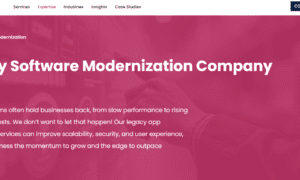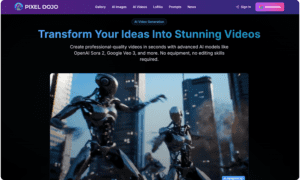In the high-stakes game of startups and small businesses, every resource counts. Forget throwing money at fleeting ads; the smart play is building a content marketing engine that consistently attracts, engages, and converts your ideal customers. It’s about becoming the trusted voice in your industry, and this guide, enriched with insights on goal setting, audience understanding, and content optimization, will show you exactly how.
Crafting a successful content marketing strategy isn’t just about churning out blog posts; it’s a strategic symphony of understanding your audience, setting clear objectives, creating valuable content, and ensuring it reaches the right people. Let’s dive into the seven best practices that will fuel your startup’s growth.
Why Content Marketing Is Non-Negotiable for Startups
The statistics speak volumes: content marketing costs 62% less than traditional marketing while generating three times as many leads. For cash-conscious startups, this efficiency isn’t just attractive—it’s essential.
But the benefits extend far beyond cost savings:
- Compound Returns: Unlike paid ads that stop performing the moment you stop paying, quality content continues working for you indefinitely, building momentum over time.
- Authority Building: In crowded markets, thought leadership is often the differentiator that tips the scales in your favor.
- SEO Dominance: Content serves as the foundation for organic search visibility—arguably the most valuable marketing channel for sustainable growth.
Source: neuroflash
Let’s explore the seven best practices that will transform your content marketing from a supplementary activity into your startup’s primary growth engine.
1. Set Crystal-Clear Strategic Objectives
Content without purpose is just noise. Before creating a single piece of content, answer these critical questions:
- What specific business goals will your content support?
- How will you measure success? (Traffic? Leads? Conversions?)
- What unique perspective can your startup bring to the conversation?
The most effective content strategies align with specific stages of the buyer’s journey:
- Awareness: Educational content that addresses pain points
- Consideration: Comparative content that positions your solution
- Decision: Case studies and testimonials that validate choices
Pro tip: Develop specific KPIs for each content piece—whether that’s email sign-ups, demo requests, or direct sales—to maintain accountability and measure effectiveness.
Source: neuroflash
Your Action Plan
- Align Content Goals with Business Objectives:
- E.g., “Generate 100 qualified leads per month” or “Boost branded search volume by 30% in six months.”
- Set SMART Goals:
- Specific: What exactly will change?
- Measurable: How will you track it?
- Achievable: Is it realistic given your resources?
- Relevant: Does it support overall business growth?
- Time-Bound: What’s the deadline?
- Identify KPIs:
- Traffic (organic sessions, pageviews), engagement (time on page, shares), conversions (email sign-ups, demo requests).
- Regularly Review and Refine:
- Revisit goals quarterly to adapt as your business evolves.
Dive deeper into ROI tracking with TechBullion’s Ultimate Guide to Mastering UTM Campaign Tracking.
2. Develop Deep Audience Intelligence
Generic content yields generic results. The startups that win at content marketing obsess over understanding their audience at a granular level.
Start by creating comprehensive buyer personas that go beyond demographics to include:
- Professional challenges and aspirations
- Information consumption habits
- Decision-making processes
- Specific objections to your offering
What questions are your potential customers asking before they even know your solution exists? These queries become the foundation of your content strategy.
Use tools like customer interviews, support ticket analysis, and competitive research to identify content gaps your startup is uniquely positioned to fill.
Your Action Plan
- Develop Detailed Buyer Personas:
- Name, role, pain points, motivations, favorite online channels.
- Example: “Techie Tom,” a CTO who craves in-depth tutorials and product reviews on LinkedIn and Hacker News.
- Engage in Direct Dialogue:
- Run 3-question surveys, 15-minute interviews, or quick polls with your email list or social followers.
- Dive into Your Data:
- Use Google Analytics’ Demographics & Interests reports and social-media analytics to profile who’s already engaging.
- Become a Social Listener:
- Monitor relevant hashtags and forums (e.g., Reddit, industry Slack groups) for real-time pain points.
For more on audience research, see TechBullion’s Guide on How to Make Market Research Right: Insights from MMA Digital.
3. Craft a Sustainable Content Calendar
Consistency trumps sporadic brilliance in content marketing. Develop a realistic publishing cadence that accounts for your team’s bandwidth while maintaining visibility with your audience.
Creating an effective content calendar is essential for maintaining consistency and aligning your marketing efforts. Whether you’re managing a blog, social media channels, or a full-scale content strategy, choosing the right calendar can streamline your workflow and boost productivity. For practical advice on how to make the best choice, check out TechBullion’s guide to choosing an ideal content calendar.
The most successful startup content calendars:
- Balance timely topics with evergreen content
- Diversify formats (blog posts, videos, podcasts, guides)
- Strategically revisit and refresh high-performing assets
- Plan content clusters around core topics to build topical authority
Components of an Effective Calendar
| Date | Content Title | Format | Owner | Keywords | Promotion Channels |
|---|---|---|---|---|---|
| May 12 | “5 Ways Startups Can Save on Marketing Costs” | Blog post | Alice (Writer) | startup marketing tips | LinkedIn, Email, Twitter |
| May 19 | “Live Q&A: Ask Our CEO Anything” | Live video | Bob (Host) | n/a | YouTube, Facebook |
| May 26 | “Infographic: Startup Growth Funnel” | Infographic | Caroline (Designer) | growth funnel infographic | Pinterest, Instagram |
Tips for Staying on Track
Source: neuroflash
- Weekly Check-Ins: A 15-minute stand-up to review upcoming items and confirm everyone’s clear on deadlines.
- Template Use: Leverage Trello, Asana, or a simple Google Sheet—whatever your team will use consistently.
- Flexibility Built In: Reserve “wildcard” slots each month for spontaneously trending topics.
Action Step: Build your first month’s calendar with at least four content pieces. Assign responsible owners and set internal deadlines one week before each publish date.
Remember: quality and relevance always outweigh quantity. It’s better to publish one exceptional piece monthly than four mediocre posts weekly.
Crafting High-Quality Content That Solves Problems
In an information-saturated world, you must go beyond catchy headlines—your content needs real substance that helps, informs, or inspires your audience. That said, your headline still plays a critical role in drawing readers in. If you’re stuck, using an AI title generator can be a helpful way to spark ideas and align your title with what your audience is actually searching for.
Your Action Plan
- Address Real Challenges:
- Identify your audience’s top three pain points and create a content series tackling each.
- Embrace Diverse Formats:
- Rotate among long-form blog posts, infographics, videos, podcasts, and case studies.
- Prioritize Substance Over Quantity:
- Publish fewer pieces that offer deep insights, rather than many surface-level articles.
- Provide Actionable Takeaways:
- Conclude each piece with a clear “Next Steps” checklist or template.
Leverage Smart Tools to Speed Up Creation:
If you’re short on time or resources, AI writing tools can be a practical way to keep your content pipeline full. For instance, you can quickly generate blog drafts, social media captions, or outlines using tools like this ChatGPT alternative without any registration. It’s a simple, no-login-needed option that makes it easier to experiment with AI and get ideas flowing when you need them most.
4. Optimize Your Content for Search Engines (SEO)
While creating solely for search engines is a recipe for soulless content, ignoring SEO fundamentals is leaving money on the table. Implement these SEO best practices:
- Conduct keyword research to identify high-intent queries with reasonable competition
- Structure content with clear headings and logical flow
- Optimize meta titles and descriptions to improve click-through rates
- Include relevant internal links to guide users through your content ecosystem
- Focus on page speed and mobile optimization to reduce bounce rates
The most powerful SEO strategy for startups isn’t about keyword stuffing—it’s about becoming the definitive resource on topics highly relevant to your solution. Even the best content needs good SEO to be found. Optimize every piece to climb search rankings and capture organic traffic.
AI Boost: Speed up SEO-driven rewrites with neuroflash’s free AI-Text-Generator, crafting keyword-rich copy in seconds. It’s a practical tool to fine-tune your messaging while staying aligned with search intent—perfect for startups juggling limited time and resources.
Real-World Spark: A local bakery that posts “Easy Sourdough Bread Recipes” with localized terms (“best birthday cakes in [City]”) can dominate local searches and drive foot traffic.
Your Action Plan
- Conduct Thorough Keyword Research:
- Use Google Keyword Planner or Ubersuggest to identify primary and long-tail keywords.
- Optimize On-Page Elements:
- Title tags, headings, meta descriptions, image alt text, and body copy all should include your target keyword naturally.
- Build a Strong Backlink Profile:
- Guest post on reputable sites, collaborate with influencers, and earn editorial mentions.
- Ensure a User-Friendly Site:
- Fast load times, mobile responsiveness, and clear navigation.
- Fast load times, mobile responsiveness, and clear navigation.
5. Leverage Content Atomization for Maximum Reach
Smart startups extract maximum value from their content investments through atomization—breaking comprehensive pieces into smaller formats for different platforms.
For example, a detailed research report can spawn:
- Blog post summaries highlighting key findings
- Infographics visualizing important statistics
- Short video explanations of core concepts
- Social media snippets featuring provocative quotes
- Email newsletter insights expanding on implications
This approach stretches your content budget while meeting audience preferences across different consumption channels. To ensure this content reaches the right people, it’s equally important to apply effective content distribution strategies tailored to your target audience.
6. Build Distribution Into Your Strategy
The “publish and pray” approach is the most common content marketing mistake among startups. Distribution deserves as much strategic thought as creation. In fact, optimizing content distribution is crucial to ensuring your message reaches a wider audience and drives results.
Effective distribution strategies include:
- Building email lists for direct distribution to interested audiences
- Developing relationships with industry influencers who might amplify content
- Participating in relevant communities where sharing valuable content is welcomed
- Implementing strategic paid promotion for high-converting content pieces
- Repurposing content for platforms where your audience already spends time
Remember: even the most brilliant content can’t work its magic if nobody sees it.
Strategically Promote Your Content
Great content needs strategic promotion to reach the right eyes. Match your distribution to where your audience spends their time.
Real-World Spark: A sustainable-fashion ecommerce brand who posts product spotlights and styling tips on Instagram and Pinterest taps eco-community audiences and partners with micro-influencers.
Your Action Plan
- Develop a Multi-Channel Plan:
- Identify top platforms (LinkedIn, Twitter, Facebook, Reddit, niche forums).
- Tailor for Each Platform:
- Adapt tone, format, and length to suit each channel’s norms.
- Engage Actively:
- Respond to comments, join conversations, and cultivate community.
- Consider Paid Promotion:
- Use targeted social ads or search-engine marketing to amplify high-value content.
- Repurpose Creatively:
- Turn a blog post into an infographic, video snippet, or downloadable PDF.
- Turn a blog post into an infographic, video snippet, or downloadable PDF.
Repurposing for Maximum Reach
- Turn a Data-Rich Blog Post into a Slide Deck: Share on SlideShare and LinkedIn.
- Extract Quotes for Social: Create branded quote cards from your expert interviews.
- Host a Webinar: Expand on your most popular article, then offer the replay as gated content.
Action Step: For your next article, outline three distinct promotion tactics (email, social, partnerships) and plan repurposing steps in your editorial calendar.
7. Implement Rigorous Measurement and Optimization
The startups that achieve exponential growth through content marketing share one habit: they treat content as a product that requires continuous improvement.
Establish a systematic review process that examines:
- Content performance against defined KPIs
- User behavior patterns and engagement metrics
- Conversion pathways from content to customer
- Content gaps revealed by audience questions and searches
Use these insights to double down on what works, improve what doesn’t, and continuously refine your understanding of what resonates with your audience.
Analyze, Measure, and Iterate
Data-driven adjustments turn good content strategies into great ones. Regular analysis helps you double down on wins and pivot away from underperformers.
Real-World Spark: A startup finds its YouTube tutorials generate more qualified leads than blog posts—so they reallocate resources to produce more videos.
Your Action Plan
- Implement Robust Analytics Tracking:
- Google Analytics, Search Console, and platform-specific dashboards.
- Regular KPI Reviews:
- Monthly or quarterly check-ins against your SMART goals.
- Identify Winners and Losers:
- Feature high-ROI content more prominently; retire or refresh underperformers.
- Embrace Experimentation:
- A/B test headlines, CTAs, and formats—continuous testing fuels growth.
- A/B test headlines, CTAs, and formats—continuous testing fuels growth.
Key Analysis Techniques
- Trend Tracking: Compare month-over-month traffic and leads to spot growth or declines.
- Content Grouping: Bundle similar articles (e.g., all “how-to” posts) to see which theme resonates most.
- A/B Testing: Experiment with two headlines, intro paragraphs, or CTAs to see which variant drives more clicks or sign-ups.
- Feedback Loops: Add a quick “Was this article helpful?” widget and use responses to refine future topics.
Action Step: At the end of each month, generate a simple report showing your top 5 articles by traffic and conversions. Highlight one surprise insight (e.g., “Our infographic outperformed blog posts in lead generation”) and plan one tweak—such as creating more infographics.
The Overlooked Advantage: Content as Customer Development
Beyond marketing benefits, consistent content creation offers startups invaluable customer intelligence. The questions, comments, and engagement patterns around your content provide real-time feedback on what matters to your market.
This intelligence can and should inform product development, messaging refinement, and even business model iterations. The startups that listen closely to content engagement often discover their most valuable pivots and opportunities.
Conclusion: Content as Your Competitive Moat
In an era of increasing competition and shrinking attention spans, sustainable growth comes from building assets that appreciate over time. For startups, a strategic content marketing operation isn’t just about driving immediate leads—it’s about building an intellectual property portfolio that becomes increasingly difficult for competitors to replicate.
By implementing these seven best practices, you’re not just publishing content—you’re building a proprietary audience asset that can become your startup’s most valuable competitive advantage. The companies that recognize content marketing as a strategic imperative rather than a marketing tactic are the ones positioned to dominate their categories for years to come.



































